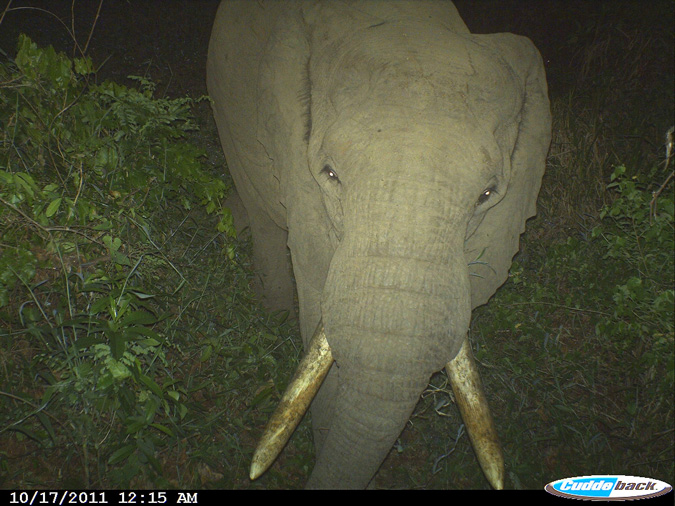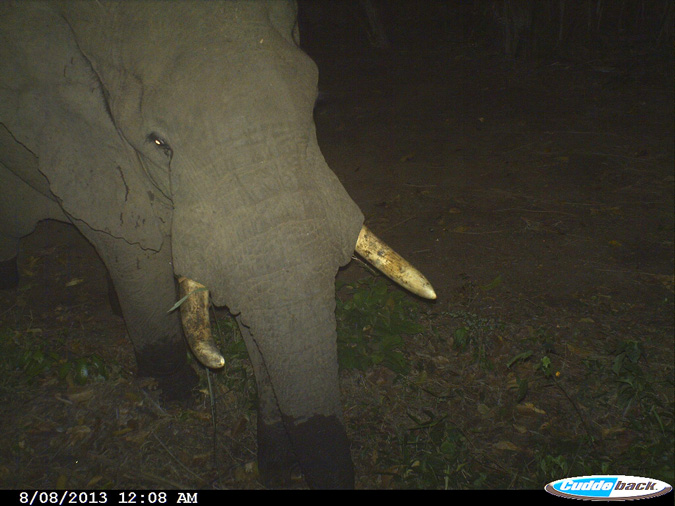One of the most pressing and challenging issues currently facing African conservation is ensuring that elephants and other wildlife can coexist peacefully with humans.
In southern Tanzania, as in many other African places, this relates largely to elephants leaving their national park homes to forage among crops in nearby human settlements.

Not only is this a threat to the local villages’ livelihoods, but it is also a potential threat to elephant populations as the culprit elephants are often killed as a result.
While this is a complex issue, as is the case for most issues relating to African conservation, here we will attempt to break it down using references and examples from the following pertinent article and study – and find out just why killing them won’t solve the problem. These examples are specifically relevant to southern Tanzania and, thanks to the work of the Southern Tanzania Elephant Program, we now have a better understanding of the elephant behavioural patterns relating to this activity in the region.
What causes elephants to eat crops?
The first step to understanding the issue as a whole is to consider why these elephants would choose to venture astray from their natural food sources in the first place. Considering that there are plenty of food sources in the region (including Udzungwa and Selous), there is more than simply diet to consider.

Interestingly, it was found, in the study of Smit et al, that all of the elephants captured by camera traps in the crop fields were male. This is quite a significant finding, given the number of elephants in the region. It was also found, going by the age range of the elephants recorded on the camera traps, that the behaviour of leaving natural feeding grounds to forage elsewhere can be linked to certain milestones in the lives of elephant bulls. These milestones are:
♦ The start of reproduction in bulls, at ages 20-30 years
♦ The reproductive peak of bull elephants at around 40 years old
The relationship between the fact that only males were found foraging in the crop fields, and their age ranges, lies in the fact that bull elephants are seeking high-risk, high-reward behaviour at this stage of their lives. Their willingness to take risks to meet their increased energy demands makes the crop fields attractive to the bulls – not only as a source of food but also as a means of engaging in high-risk, high-reward behaviour, which is necessary for the bull’s development at this stage.
An additional bonus for the bulls is that the distances they have to travel to obtain this risky food source are significantly shortened because of the close proximity of the outer-lying crop fields to the national parks. So, the bulls are lucky to have these crop fields as a convenient source of food and adrenaline – but the impact on the livelihood of the human settlements is significant enough to warrant retaliation and further disrupt peaceful coexistence.

What can be done about it?
These findings from the camera traps are a fantastic example of how using patient and calculated scientific methods has led to a deeper understanding of animal behaviour, which, in this case, can be used to aid the coexistence between elephants and humans. Crop foraging is a primary obstacle to peaceful coexistence, so it’s important to gain a deeper understanding of not only why it happens but also what to do about it.
In their study, Smit et al. found a high degree of variation in crop foraging among individuals, with most bulls venturing sporadically and infrequently into the crop fields. This is an important finding in relation to prevention strategies because it means that the legal or condoned killing of these bulls as ‘Problem Animal Control’ would result in a higher number of individual bulls being killed – a significant loss for a species already under major threat from poaching in the area. It also means that killing individuals as retaliation to incidents is unlikely to affect crop loss, as many individuals are foraging at irregular intervals.
Further, killing these bulls would mean that the herd loses important breeding individuals, affecting its population dynamics and structure. If the bulls were to continue being killed, the young would potentially lose a vital source of social, behavioural, and ecological knowledge.

Effective strategies to prevent crop loss
Thankfully, there are more effective, non-lethal strategies that have been proven to curb crop losses and the subsequent devastating killing of elephant bulls. For example, in an ongoing study in Kenya, the use of beehive fences has been shown to have an 80% success rate in keeping elephants out of the nearby farmlands – and, what’s more, the community was also able to benefit from the sale of ‘elephant friendly’ honey.
The use of beehive fences is a good example of land-use consideration in community conservation efforts. A negative spin-off of land use inconsideration, together with rapidly growing human populations, has been the destruction of natural wildlife corridors. Therefore, it is now appropriate to consider mitigation efforts more carefully and sustainably.
Finally
Ultimately, it’s about ensuring the peaceful coexistence of humans and elephants in close proximity. Science has helped us understand these complex issues so that we can develop science-backed strategies and solutions—in this case, non-lethal strategies that promote peace.
Also read: Bees – a solution to human-elephant conflict
To comment on this story: Login (or sign up) to our app here - it's a troll-free safe place 🙂.![]()






